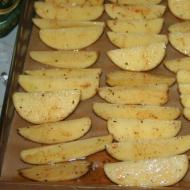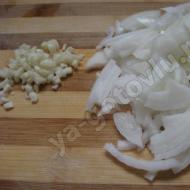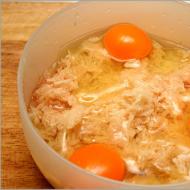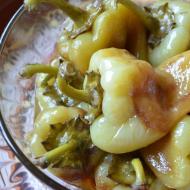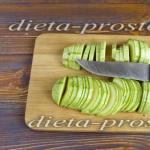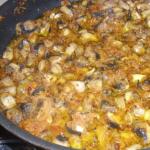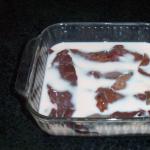
We make a distillation column with our own hands - step by step instructions. Step-by-step instructions for working on a distillation and beer column
A distillation column (RK) is a device for separating alcohol from an alcohol-containing liquid, which is significantly superior to moonshine in terms of purification. Without it, it is impossible to make a truly high-quality alcoholic drink from organic raw materials. This article discusses the principles of designing the RC.
What is alcohol distillation
Rectification of alcohol - the separation of an alcohol-containing mixture into components with different boiling points, carried out due to heat and mass transfer. The latter occurs as a result of the system's desire to balance the temperature, pressure and concentration of each component (alcohols, water, fusel oils, etc.) in the liquid and gaseous phases.
In the course of heat and mass transfer, the vapor is saturated with substances with a low boiling point (volatile or low-boiling), the liquid is saturated with high-boiling ones. The vapor rises, which allows, when the system reaches equilibrium, to select the most volatile component.
Advantages and disadvantages of the rectification method
Alcohol distillation has two advantages:
- Low content of impurities in the final product. The method allows to separate with high accuracy from each other components that differ in boiling point by only 0.1 degrees. The alcohol concentration at the outlet is 96% - 98%.
- Low alcohol loss. Only 1% - 3% ends up in waste.
Flaws:
- The complexity of the method. Rectification is possible only with the right combination of a number of conditions, which requires the operator to have a deep knowledge of the process. The distillation column is simple, but all its parameters must be accurately calculated.
- Relatively large height of the distillation column.
- No taste of raw material.
The aroma and taste of fruits present in the raw material are completely cut off during rectification, which is compensated in the following ways:
- prepared from the obtained pure alcohol tinctures;
- high-boiling fractions are added to alcohol in acceptable amounts.
How the column works
The device of a distillation column is not difficult. It consists of the following nodes:
- cube: container for raw materials;
- tsarga (vertical pipe) with contact elements - nozzles or plates;
- dephlegmator: installed at the top of the drawer;
- selection unit with aftercooler;
- heater;
- thermometers.
The principle of operation of the distillation column is as follows:
- The raw material is heated in a cube (filled by 2/3 of the volume) and evaporates.
- The steam that fills the drawer cools in the dephlegmator (coolant is supplied here) and turns into condensate - phlegm.
- The phlegm flows down the contact elements. The design of the latter is focused on creating a significant area of liquid-vapor contact, which is necessary for intensive heat and mass transfer.
- When the equilibrium process occurs, as evidenced by a constant temperature, the operator opens the extraction valve and the steam located at the top of the drawer side enters the aftercooler. Cold water is also supplied here.
- As in the moonshine still, the low-boiling components are separated first - aldehydes, ethers, methyl and ethyl alcohols, then - fusel oils and other high-boiling ones.
Often they are interested in what is better - a distillation column or a moonshine still (distiller)? In the latter, a simpler method is used and the taste of raw materials is preserved, but there are a number of important drawbacks:
- High concentration of impurities in the final product: the proportion of alcohol is only 40% - 65%. To obtain a 96% concentration, it is required to repeat the distillation 9-10 times.
- Significant loss of alcohol: not less than 20%.
But a compact home-made distillation column cannot act as a replacement for a moonshine still: it is effective at an alcohol concentration in raw materials of 35% - 45%, while in mash it is only 10%.
Both devices are used in series:
- raw alcohol is obtained from mash using a distiller;
- raw alcohol and alcohol-rich by-products of distillation are loaded into the RK and a pure product is obtained at the output.
Types of columns
According to the type of contact element, two types of RK are distinguished:
- plate-shaped: plates are used, mainly industrial installations;
- nozzles: nozzles twisted from wire are used - an option for home and laboratory RK.
Along with the usual RK, combined full-cycle devices are produced - moonshine stills with a distillation column.
How to make at home
In the process of manufacturing a distillation column with your own hands, the most difficult stage is the calculation. Consider all the components and their parameters.
Tsarga
Manufactured from steel pipe with parameters:
- material: food stainless steel (12X18H10T);
- inner diameter: D = 28 - 60 mm;
- height (the side is placed vertically): H = 1200 - 1500 mm;
- wall thickness: 1.0 - 1.5 mm.
The higher the tsarga, the purer the alcohol at the output.
Heater
Rectification requires fine-tuning of the temperature, so a heater is needed:
- with low thermal inertia;
- with the ability to adjust the power in steps of 5 - 10 watts.
These requirements are met only by heating elements connected through a relay with voltage stabilization at the output. The gas stove does not fit.
For a sufficiently rapid heating of raw materials for every 10 liters, a power of 1 kW is required. After warming up, they reach rated power. It is approximately equal to the cross-sectional area of \u200b\u200bthe side in mm (clearance). More precise values for various D/H ratios:
- 52/1000: 1950W;
- 50.8/1500: 1790W;
- 42/1500: 1190W;
- 40/1000: 1133W;
- 32/1500: 660W;
- 28/1500: 490W.
Nozzle
The most effective spiral-prismatic nozzle (SPN). It is expensive, but available for self-production. The optimal size is (0.067 - 0.083) D. For various D, it will be:
- 50 mm: 3.5x3.5x0.25 mm;
- 40 mm: 3.0x3.0x0.25 mm;
- 32 and 28 mm: 2.0x2.0x0.25 mm.
It is allowed to use instead of SPN a wire washcloth for washing dishes.
Cube
It is made from a can, pressure cooker or cooked from steel sheets. A 2/3 filled cube should contain raw materials in the amount of 10 - 20 nozzle volumes. That is, at H = 1.5 m, the volume of the cube for different D is:
- 50 mm: 45 - 90 l;
- 40 mm: 25 - 50 l;
- 32 mm: 15 - 30 l;
- 28 mm: 10 - 20 l.
Dephlegmator and aftercooler
Do-it-yourself distillation columns are equipped with two types of dephlegmators:
- Dimroth refrigerator: specific utilization power (UUM) is 4 - 5 W/sq. see surface;
- jacketed refrigerator: UUM - 2 W/sq. cm.
The area of the reflux condenser is calculated by dividing the rated power of the column by the UUM of the refrigerator used. For columns with a selection of steam above the reflux condenser, the value obtained is multiplied by 2/3.
The aftercooler is structurally similar to the reflux condenser and has the same dimensions.
Calculation
The calculation of a distillation column is complex and requires knowledge of the characteristics of the materials used. Even minor mistakes can make all the work useless: the fractions will be partially mixed, and it will not be possible to get a pure product at the exit. It is more correct to use ready-made drawings of a distillation column in the manufacture, which has proven its suitability in practice, or to purchase a factory-made apparatus.
Found an error? Select it and click Shift+Enter or
On May 28, 2019, a new moonshine still entered the market. Regardless of our review, this model will become one of the most popular on the moonshine market, because Luxstahl 6 is a brand, quality and adequate cost. We decided to objectively evaluate the novelty and compare it with the device, which went on sale on April 19, 2019. Even if you are not thinking about upgrading your equipment, then you should definitely take a look at our review and appreciate the benefits of new generation devices.
The new version of Luxstal 6 is a complete distillation column with a 2-inch liquid take-off, which, if desired, is transformed in a classic bast column(the format to which we are all accustomed).
surprises everyone new rectification regime, at which the refrigerator rises, and the reflux condenser turns into a phlegm aftercooler. In fact, there is nothing complicated in the device, it is enough to understand the principle of operation once and you can safely drive VERY STRONG moonshine at home.

Appearance of Luxstal 6 in distillation column mode
Let's take a look at the total cost. Prices start from 19 990 rubles with a distillation cube of 20 liters. But even for the previous version, this volume was not enough, so you need to take a cube of at least 37 liters, and this is 23 990 rubles.
Prices for Luxstahl 6 from the manufacturer:
- A column WITHOUT a distillation cube - 12,990 rubles.
- A column with a cube of 20 liters - 19,990 rubles.
- Column with a cube of 37 liters - 23,990 rubles
- Column with a cube of 50 liters - 26,990 rubles
There is good news: column can be purchased separately.
If you have a tank with a 2-inch clamp connection, then you can buy only the top of the device and easily adjust it, saving about 10 thousand rubles.

Column in classic mode
The kit comes with everything you need for comfortable work (hoses, adapters, seals, taps). Additional device type gin baskets for flavoring moonshine and TEN'a sold separately, but without them it is quite possible to work and not break off.
You will definitely need a good induction cooker (this is 7-10 thousand rubles), since the power of the gas burner is not enough, and it simply does not fit on the stove (the minimum height will be 125 cm, and in rectification mode about 180 cm). Therefore, buying from scratch will cost you at least 30 thousand rubles.

New dome cover Luxstal 6 (increasing the useful usable volume of the cube)
Appearance of the Luxstal 6 column: how to work with it in general?
Surprises everyone at first upside down refrigerator. It looks non-standard, but such a system works perfectly. It is thanks to this technical solution that you will be able to get closer to the moonshine strength of 96.6%. It is better to see the principle of operation clearly in the video, which is located just below.
You will have to distill moonshine in any case twice. The first in potstill mode at maximum speed, and the second with the selection of fractions of the head, body and tail. Therefore, no revolution happened, relax 🙂

Potstill mode (first distillation)
The device can operate in all modes known modes, it is easily transformed using clamp connections. You don't have to be a very experienced moonshiner to join two pipes with a clamp, so don't worry about that.
I suggest you watch the presentation from the official Youtube channel Luxstahl, where the manufacturer shows the main features and technical characteristics of the new model.
Pitfalls of Luxstal 6: where can problems arise?
There is nothing perfect except our wives, so even such a beautiful column has a number of shortcomings that are worth focusing on.

Those same legendary quick releases from Luxstal.
- You will not be able to work on a kitchen gas stove. The height of the apparatus assembled with a tank of 37 liters will be 125 cm, and if you turn the refrigerator over and proceed to rectification, then all 185 cm. I highly doubt that all moonshiners in their houses have ceilings under 3 meters and there is no hood.
- You will have to buy a sane induction cooker (7-10 thousand rubles). The costs smoothly arising from the first paragraph, which the owner of the Luxstahl 6 column will have to spend on. You definitely won’t have enough tiles with a gas cartridge or an incandescent element for 700 rubles.
- An extra false bottom, due to which the cost of the device rises. A few of my moonshiner friends use the second bottom to distill grain mash. It is enough to simply reduce the heating rate and slow down the distillation, after which the mash will foam much less. It is clear that if you buy a device for 30 thousand, then plus or minus a thousand does not play a role, but still the moment is extremely delicate. It was possible to include this bottom in additional equipment.
- Legendary Luxsteel quick couplers. Get fum tape in advance to tightly fix the hoses in the nests. In the new version, their size has decreased by 2 mm (from 12 to 10 mm) and the problem seems to be solved, but if something suddenly leaks during the haul, then you will not have time to run to the plumbing store.
Let's give credit to the manufacturer: the guys from Luxstal listen to the feedback from moonshiners and solve the most pressing problems that arose in previous versions.
But, as noted earlier, almost nothing is perfect, so even with such a candy as Luxstal 6, you will sometimes have to tinker.

Dimensions moonshine still Luxstahl 6 with a tank of 37 liters
Comparison of competitors Luxstal 6 and Wayne 5: which is better?
If we talk about moonshine stills of the MOST new generation, then the competition so far is only between Luxstahl 6 and Wein 5. Manufacturers were the first to make a non-standard column shape, launched an excellent advertising campaign and entered the world market.
It's time to compare prices and features of models and choose the device that turned out to be more efficient, faster and larger. From below you see comparison table, which lists the main technical points of both models.

As you can see in the table, Luxstal 6 wins noticeably at a price (for 5 thousand rubles) and by possibility to purchase the column separately from the cube. A more efficient refrigerator and the presence of Panchenkov nozzles in the package also make it better.
But tsarga shorter by 13 cm and dephlegmator weaker by 20%. The aftercooler is able to process phlegm and turn it into pure alcohol; in any case, it is not worth rushing when selecting liquid, so this is not critical. But the shorter tsarga plays a rather important role, because at 66 cm you can fit 1 Panchenkov grid more and the degree of purification will be higher.
My subjective opinion: 13 cm tsars do not cost 5 thousand rubles. Luxstal offers a second 50 cm drawer for 2,990 rubles (with copper nozzles included) as additional equipment. And in any case, it will be more efficient and cheaper than Wayne 5.
Therefore, Luxstal 6 clearly wins here.
Cool features of Luxstal 6: what is really done here?

The most beautiful refrigerator - as a separate art form
- Embedded hole for heating element on the clamp. If earlier manufacturers took money for cutting a heating element into a distillation cube, now this business has been put on stream and the output under the heating element is available in any configuration. This markedly reduced the headaches and expenses of moonshiners.
- dome lid. The useful volume of the tank increases, the circulation of vapors improves and the probability of splashing of the mash is reduced. A modern solution that really works.
- "Parrot" from the can in the basic configuration. A device for constant monitoring of the strength of moonshine during distillation comes as a gift, but the thing is really useful and necessary. They made it simpler and more budgetary (from a can), but effective. I found this decision to be very appropriate. No one else on the market has offered this.
- Very high quality welding. Luxstal has always been famous for its very beautiful and high-quality connections, so everyone is already used to it and you won’t surprise anyone with it. But it's still very important.
The guys surprised the market and, in addition to the non-standard form, added nice bonuses that significantly simplified the work of moonshiners.
If it were not for this "gift" false bottom, then in general 10/10.

Budget Parrot from Luxstal 6
Video with transfer to Luxstal 6: how does the device work in different modes?
We hope the manufacturer will not keep us impatient for a long time and will post a distillation video today (May 29, 2019). In the comments on Youtube, they promised to do this, so as soon as something appears, I will immediately publish everything here.
Where to buy the original Luxstal 6 from the manufacturer
Prices on all sites will be the same, since Luxstahl has a lot of partners in Russia, but still I will leave a link to the manufacturer's website - luxstahl.com
When ordering on this site, no one will definitely deceive you and sell 100% original equipment.
If I order a new version of Luxstal for someone, it will definitely be on this site.
This step-by-step instruction is just one of the methods of distillation on a distillation (RD) or mash (BK) column, having mastered which you can get a highly purified product. However, for fruit, berry and grain distillates there are technological nuances, without knowing which, instead of a flavored drink, there will be pure alcohol. Each type of nozzle has its own characteristics. Use the proposed method as a start for studying the operation of columns, training on sugar mash, or knowing that you will end up with rectified alcohol or a drink close to it.
Initial conditions. Raw alcohol is available - sugar mash distilled on a conventional distiller (moonshine still) and - RK or BK. In this case, the procedure for working on different types of columns is almost identical, and the differences are described in appropriate places in the instructions.
 Rectification scheme
Rectification scheme  An example of a distillation column in assembled form with a description of the main structural elements
An example of a distillation column in assembled form with a description of the main structural elements Technology of home distillation on RK and distillation on BC
1. Fill the cube with raw alcohol no more than 3/4 of the height, leaving at least 10-12 cm of the vapor zone. However, it is also impossible to fill in too little, so that at the end of the distillation process, when there is almost no liquid left in the cube, the heating elements do not emerge (do not become bare).
The strength of the cubic bulk should be about 40%. This value is related to the minimum phlegm number required to achieve the selection of a given strength. With an increase in the strength of the bottom bulk, the minimum reflux ratio decreases non-linearly, reaching a minimum at a strength of about 45%. Therefore, if you start the process with a fortress of 60%, then you will have to reduce the phlegm number up to 45% of the fortress, and then increase it as the distillation residue is further depleted in alcohol. That is, first increase the selection from 60 to 45% of the cubic strength, and then reduce it. As a result, rectification will not only be more difficult to manage, but will also take longer.
2 Turn on the heater at maximum power and bring the raw alcohol to a boil. The optimal heating element power for overclocking is 1 kW per 10 liters of bulk, then the time to boil is 15 minutes for every 10 liters of bulk.
3. Shortly before the start of boiling, at a temperature of 75-80 ° C in the cube, turn on the water supply. After the start of boiling, reduce the heat to operating power. If the operating power is not yet known, reduce to a level below the rated power by 200-300 watts. Adjust the water supply so that the steam is completely condensed in the dephlegmator. The outlet water should be warm or hot. The column began to work for itself.
4. Monitor the values on the thermometers in the column, wait for the readings to stabilize.
5. Determine the operating power of the column. To do this, after stabilization of temperatures, check the pressure in the cube. You will need a pressure gauge up to 6000 Pa (0.06 kg / sq. cm, 400 mm water column), or a U-shaped differential pressure gauge, a pressure gauge from a tonometer will also work (if nothing else is found).
If the pressure is stable and does not increase, increase the heating power by 50-100W. The pressure in the cube should rise and after 5-10 minutes stabilize at a new value. Repeat this operation until the pressure ceases to stabilize and continues to increase, for example, after 20 minutes the increase continues. Remember the current readings - this is the power of the choke.
If there is a 50 mm column and a SPN 3.5 packing, then the last non-increasing pressure (in mm of water column) will be approximately equal to 20% of the column height in millimeters. If the pressure is 30-40% of the height of the column, this means that the phlegm has hung, and the choke process continues. With a less dense nozzle with less holding capacity, the power of the choke will be higher.
If there is no pressure gauge, they are guided by the sounds of the column - when choking, the column may begin to sway, gurgling, increased noise is heard, and spontaneous emissions of alcohol through the communication tube with the atmosphere or into the refrigerator when steam is taken are also possible. For the first time without experience, it is difficult to determine the choking of the column, but it is possible.
After determining the power of the choke, turn off the heat and wait a few minutes for the phlegm to glass into a cube. Turn on the heating at a power 10% less than the choke. Wait for stabilization of temperatures and pressure in the cube. If everything is in order, then this will be the working capacity of the column.
If the operating power is much lower than the nominal, this means that the packing or packing support elements are not properly packed in the column: the packing is too overpacked, possibly tangle, there are pockets of reflux concentration, where the steam stops it, flooding the column. In this case, you need to disassemble the column, pour the nozzle, straighten the tangle, then reassemble and repeat the setup process.
The operating power of the column is determined once. In the future, the obtained value is used constantly, occasionally making adjustments.
With a properly selected working power, the pressure in the cube will be the same every time. It does not depend on the diameter of the column and usually amounts to 3.5 - 150-200 mm of water for the SPN packing. Art. for each meter of nozzle height, for SPN 4 - 250-300 mm of water. Art., for other nozzles, the value will be different.
When looking for working power, you can also focus on the following practical data: for an etched heptagonal SPN 3.5, the working power in watts is approximately equal to 0.85-0.9 of the pipe cross-sectional area in millimeters. If SPN 4 is used, the coefficient increases to 1.05-1.1. For less dense nozzles, the coefficient will be higher.
6. After stabilization at operating power, let the column work for itself for 40-60 minutes.
7. Set the selection of "heads" at a rate of 50 ml/h for a 40 mm column, for 50 mm - 70 ml/h, for 60 mm - 100 ml/h, for 63 mm - 120 ml/h. Provided that SPN is used.
The time of selection of "heads" is determined based on the bulk volume: 12 minutes (0.2 hours) for each liter of 40% raw alcohol. It must be remembered that this is not distillation in a conventional apparatus with a coil - in the columns there is a separation into fractions and their sequential withdrawal to the selection in a concentrated form.
Recommendations such as 3-5% of absolute alcohol are average values, but no one has canceled them, and precise control of the end of the selection of “heads” is done, guided by the smell of the exit. It should be remembered that the time and speed of the selection of "heads" are not related quantities. If you select "heads" at twice the speed, they will simply turn out in a less concentrated form.
General principle: during the selection of any fraction, it is impossible to take more from the column than enters the selection zone. This will prevent violation of the separation of fractions along the height of the column.
8. Changing the rate of extraction is only possible by adjusting the water supply to the reflux condenser for columns with steam extraction upstream of the reflux condenser. If the column is with liquid extraction, then just a selection valve.
The heating power must always be constant, this ensures the stability of the amount of steam supplied to the column and the operation of the column as a whole.
9. Select headrests - this is second-class alcohol, slightly contaminated with head fractions. Its amount is equal to 1-2 volumes of alcohol held by the nozzle in the column (150-500 ml). In fact, the nozzle is washed from the remnants of the “heads” and the intermediate fractions accumulated in the column. To do this, the selection is set at 1/3 of the nominal (about 500 ml/hour). Alcohol of the second grade is suitable for re-distillation.
10. Go to the "body" sampling: set the initial sampling rate equal to the nominal or slightly higher. The rated speed (ml/h) is numerically approximately equal to the operating heating power (in W). For example, if the working power is 1800 W, then the initial rate of selection of the “body” is 1800 ml per hour. By the end of the selection, the power is reduced to 600 ml / hour,
11. Control the process according to the readings of thermometers and the pressure in the cube. There are several methods. The simplest is to navigate by the temperature difference between the lower (20 cm from the bottom of the nozzle) and the middle (at half or 2/3 of the column height) thermometers. After the start of the selection of the “body”, the difference in these readings should not change by more than 0.3 degrees. As soon as the difference increases by more than the accepted value, it is necessary to reduce the selection rate by 70-100 ml.
Special cases: if there is only one thermometer, proceed in the same way, focusing on the change in its readings. For the lower - a change of 0.3 degrees, for the upper - 0.1 degrees. This is a less accurate method, as it is sensitive to changes in atmospheric pressure.
If there are no thermometers in the column at all, they are guided by the change in temperature in the cube - they reduce the selection by 6-10% after the temperature in the cube rises by each degree. This is a good method that allows you to get ahead of the rises in the column in terms of temperature.
12. After the selection of half of the “body”, more and more often it is necessary to reduce the speed of selection. When the temperature in the cube rises above 90 °C, fusel and other intermediate impurities leave the cube and accumulate in the nozzle. To cut them off more clearly, you can let the column work for itself for several minutes before reducing the selection, then resume the selection after the temperature difference returns to its previous level, naturally, reducing the selection rate. This will make it possible to more clearly cut off the "tails" by creating an alcohol buffer in the sampling zone.
13. When the selection is reduced by 2-2.5 times in relation to the initial temperature, the temperature regularly leaves the operating range, while the temperature in the cube is 92-93 °C. These are signals for the BC that it is time to move on to the selection of "tails". On the RC, due to the greater holding capacity, with less than 20 packing volumes, the selection can be continued up to 94-95 ° C, but the process is often stopped, saving time and nerves.
Change the container, set the selection rate to about half or 2/3 of the nominal. Although these are "tails", but you need to try to take a minimum of impurities. Sample up to 98 °C cubed. "Tails" are suitable for the second distillation.
14. Rinse the column. After selecting the "tails", let the column work for itself for 20-30 minutes, during which time the remaining alcohol will collect at the top, then turn off the heating. Alcohol, flowing down, will wash the nozzle.
Also, periodically you need to steam the nozzle, removing the remnants of fusel oils. This can be done by driving the raw alcohol "dry", then continue the selection at a decent speed until an odorless distillate comes out. The second method is to pour clean water into the cube and steam the column.
Fans of making homemade alcoholic beverages eventually come to the need to improve quality. The best solution is to obtain pure alcohol and dilute it according to the required recipe.
A distillation column will help you get pure alcohol. More recently, information about home rectification was not available, today a large number of specialized forums and blogs cover in detail the process of home rectification and the construction of related equipment.
Rectification is the process of cleaning alcohol from light ether and heavy fusel components, getting rid of the product from glucose, sugars and acids. The rectification process allows you to get pure ethyl alcohol up to 96 °.
The resulting raw material is used for technical, medical purposes, as well as for the preparation of high-quality alcohol.
Reference. In order to make the device without errors with your own hands, you need to understand the physics and chemistry of rectification processes.
Raw alcohol or mash is heated in a cube. Vapors rise along the side, the heaviest parts condense at the bottom of the packing and flow into the cube. Vapors rise more easily above the packing, condense and flow into the cube. A new portion of vapor rises, heats the already flowing phlegm, light fractions evaporate from it - the fundamental principle of heat and mass transfer comes into force.
The lightest particles reach the Dimroth refrigerator, where they cool and drain. When the vapors in the distillation column "lined up" on the floors in accordance with the density, the selection of alcohol begins in the upper part of the column. Novice rectifiers make a mistake at this stage - or they make a "choke" - an excessive occurrence of phlegm, or they take a lot of product, then the "number of floors" suffers and the resulting alcohol will be with impurities.
Making a distillation column at home is quite difficult. Serious manufacturers calculate and test their product in detail, attach detailed instructions. The do-it-yourselfer has a choice:
- Repeat the idea of popular manufacturers, copy an existing device. If necessary, changes and improvements can be made to the proven schemes.
- Design your own scheme, different from others.
What does a distillation column consist of, and its drawing?
A home master can make a tsarg distillation column. She forgives many mistakes, and the result will be guaranteed.

Drawing of distillation column
alembic
This is a container where heaters are built in, mash or raw alcohol evaporates.

Capacity specifications:
- Strength. The weight of the distillation pipe will be on the lid, so the cube must be rigid.
- Chemical neutrality to alcohol. The ideal material is food grade chromium-nickel steel (stainless steel).
- Convenience. The container must be lifted, moved, and the bard (distillation) drained from it. The volume of the container is calculated depending on the required performance of the apparatus, the power of the heaters.
- Warming. Heat loss should be kept to a minimum. therefore, both the walls and the bottom must be “packed” in insulation without cold bridges.
Tsarga for moonshine still
The tsarga is a pipe that is installed on a cube. In fact, this is the main frame of the distillation column. There is a plate-shaped tsarga, but it is rarely used at home.

Characteristics:
- Strength. The wall thickness of the drawer side is usually taken from 1 to 1.5 mm. This creates sufficient strength at low weight.
- chemical neutrality.
- Warming. In order to line up a pair of different fractions “by floors” in a column, the tsarga must be well insulated. A sleeve made of expanded polypropylene or expanded polystyrene trays used in plumbing is perfect.
- Collapsibility. For ease of cleaning and storage, the drawer can be made collapsible - from knees of 30-40 cm. This will allow you to adjust the height of the device, which affects the speed and quality of products.
- The presence of viewing glass areas.
- Diameter. If it is a thin tube (up to 2 inches), packing is not needed - all processes take place on the walls. Such a column is called a film column. Diameters higher require the use of a packing - sealing packing to increase the area of heat and mass transfer.
Stuffing or nozzle
The stuffing is needed for the deposition of phlegm, its re-evaporation. The main characteristic of the stuffing is the area. Stones of certain breeds, a stainless steel sieve, stainless steel chip spirals are used as packing.

There are many ready-made solutions on sale, home craftsmen have come up with various inexpensive substitute options. Most often, metal dishwashing nets or metal shavings are used to replace factory packings.
The alignment of vapors by floors depends on the volume and density of the nozzle. If the column uses a small chipping prismatic nozzle, a lattice support must be made so that the nozzle does not fall into the cube.
Dimroth cooler
At the top of the distillation column is a cooler - a tube twisted into a spiral.

Cold water circulates through it. It completely cools all light vapors. It is characterized by the plane of inclination, power, length.
Selection node
It serves to select alcohol from the upper "floor". The selection is not carried out completely, most of the phlegm returns to the tsarga. The ratio of the withdrawn product to the phlegm returned to the back is called the phlegm number.

The higher the reflux number, the lower the productivity of the apparatus, the cleaner the product is.
There are three types of selection:
- By the way. the selection unit is located above the Dimroth refrigerator, and catches the erupted vapors. They are cooled in an additional flow-through refrigerator.
- By liquid. The cooled phlegm of the “upper floors”, dripping from the refrigerator, is taken through inclined planes or a sump.
- For a couple. Part of the steam rises up to Dimroth, and part rushes to an additional refrigerator, where it condenses. A stable reflux ratio is provided, which does not change during the entire distillation time.
Additional refrigerator
Has an auxiliary function.

What is he doing:
- cools the resulting product,
- besieges accidentally caught vapors,
- cools the finished product.
You will learn more about what a distillation column is and what the principle of its operation is from this video:
Design choice
The size and design of the apparatus depends on a number of factors:
- Required performance. with greater productivity, the side with stuffing will be higher and wider - the pair passes more. The cooler and extraction unit must also provide sufficient efficiency. The minimum length of the tsarga is 1.5 meters, it is better to make it collapsible from three knees - 1 meter, 0.2 meters, 0.5 meters. this will allow the device to be used for both distillation and rectification.
- Possible sizes. Often home distillation columns are limited in size due to the height of the ceiling. To save space will help shifting the dimroth refrigerator in the upper part of the apparatus, or placing it perpendicular to the side (Thor's hammer).
- Access to metalworking technologies. A stainless steel apparatus will last a long time and will not oxidize alcohol, but argon welding or stainless steel electrodes will be required to connect the parts. Cooking stainless steel is difficult. If possible, laboratory heat-resistant glass can be used, but it is too fragile. A great option for a do-it-yourselfer is copper. It is easily soldered with a gas burner, there are a large number of
- The volume of fueled raw materials. The larger the applied cube, the higher the performance should be. Evaporation of alcohol occurs at 75 - 80 ° C, lowering the temperature will reduce the speed of the process.
- Budget. With a minimum budget, a simple but effective design with mechanical adjustments should be considered. If the budget is not constrained, the device is complemented by precise needle cranes, additional nodes and automatic control.
For home distillation, the simplest will be a column with a cube of up to 50 liters with built-in heating elements with a power of 3 kW. Column diameter 32 mm, liquid extraction unit based on the design of Alex Bokakoba, Dimroth cooler inserted above the selection unit.

An additional cooler is not needed; instead, a 1.5-meter long plastic tube cooled by air serves perfectly. As a nozzle, you can use the Panchenko nozzle, SPN or metal stainless steel washcloths for dishes. All connections are made on inexpensive plumbing threaded connections.
Optimal Calculations
The calculation of the column begins with the definition of the following parameters:
- Possible height. Practice shows that a height of 1.5 - 2 meters will be optimal for a home device. If a gas stove is used as a heater, the height of the drawer will be 1.2 - 1.5 meters. The diameter depends on the height, the average ratio is 1/50. For example, the tsarga 1.5 meters should be no more than 32 mm. (round up to standard pipes).
- The power of the heating element or heater. A 1.5 meter drawer will have a capacity of approximately 300 ml / hour, which corresponds to 300 watts of heating element power. The power of the heater must be sufficient to heat the volume of mash up to 70 ° C for 1 hour, and also have the possibility of optimal regulation.
- The volume of the cube. This is an insulated container with a convenient size, transportable. To save room height, the diameter and height should be approximately the same. The amount of heated vapor depends on the volume of the cube. For home use, beer kegs of 25, 30, 50 liters are convenient. It is better not to use aluminum cans or tanks - aluminum corrodes quickly.
- Cooler power. The cooler must fully cope with the condensation of vapors with a minimum flow of water. There is no exact formula for calculating the power of a cooler; the number of turns and length are selected empirically. For our design, 30 centimeters of a tightly wound spiral from a 6 mm tube is quite enough. It is better to make a refrigerator with a power reserve and regulate the rate of cold water supply.
How to make from fitting plumbing at home?
Actions are as follows:
- We buy materials- 2 meters of 32 mm copper pipe; tin for soldering; 15 cm copper tube with a diameter of 8 mm, 2 meters of 6 mm tube; needle valve, plastic hose with a diameter of 8 mm. We purchase a ready-made nozzle or a substitute - ceramic gravel, metal washcloth. The simplest connectors are clamps or brass threads.
- We make a king. We divide the pipe into segments of 1 meter, 0.3 meters, 0.5 meters. We solder a segment of 10 centimeters to the cube lid, insert a mesh to delay the nozzle. At each joint, we solder a clamp connection or plumbing thread made of copper or brass.

- Assembling the node selection based on Alex Bocacoba. On a tube 0.3 meters long, closer to the bottom edge, we make two angular cuts at 30 - 40 degrees. We insert copper plates into the cuts, cut and solder. We drill a hole for the liquid sampling tube, the hole should be at the bottom of the "pocket" of the bottom plate. We solder a thread for a needle valve on the sampling tube, which will regulate the sampling. On the side and just above the sampling hole, we insert the “forward flow” tube. It is needed to control the phlegm number. The forward flow conducts the phlegm from the selection “pocket” below, the phlegm drips into the center of the nozzle. The middle part of the forward flow is made of a transparent plastic tube.

- Assembling the cooler, for which we tightly wind a copper tube stuffed with sand onto a pin with a diameter of 12 mm. The pin is removed, the sand is shaken out and blown out. It turns out a spiral, one end of which must be threaded inward. The beginning and end of the tube is threaded into a brass "cup" with a thread and sealed - this is a cork. The resulting refrigerator is inserted above the selection unit, dripping phlegm is collected by inclined planes.

- Before use, pour the nozzle into the drawer. The nozzle should not tightly clog the pipe, steam should pass freely through it.

- If desired, you can make a flow-through aftercooler. It consists of two tubes, with a diameter of 10 and 12 mm. The length of a thin tube is 3 cm shorter than a thick one. The tubes are inserted one into the other and the ends are sealed. The inlet and outlet of cold water are soldered to a thick tube.
The column is assembled and ready to use. Before use, it is better to wash the parts with a weak solution of acetic acid using a brush.
Watch a video that shows how to assemble a distillation column with your own hands:
Operating modes
The modes are as follows:
- Heating the mash up to 72 -75 ° С. The Dimroth cooler operates at minimum power.
- Warming up the column and building "floors" of reflux condensation. Throughout the column there is active bubbling and steam and mass exchange. It is important to prevent oversaturation of the column, otherwise there will be a "choke" - phlegm will clog the entire diameter of the tsarga. We select the power of the heaters so that the temperature near the sampling unit is 71 - 75 ° C.
- Start of selection. When selecting for liquid, the slender pyramid in the side is inevitably violated, so the reflux ratio will need to be adjusted. The vapor density gradually decreases, as does the intensity of selection. The first selected liquid - "heads" - contain volatile ethereal components. The volume of heads reaches 20% of the planned alcohol content.
- Selection of the main commercial alcohol goes until the smell of fusel oils.
- If you want to extract everything possible from the raw materials, we draw out the "tails" - the last part of the alcohol-containing vapors. They contain a large amount of fusel oils, the tails are mixed in "heads" and used for further rectification.
- Completion of rectification- turning off the heater, cooling pipes.
The whole cycle, depending on the desired product quality, can last a relatively long time - from 8 hours to 2 days.

The average productivity of the column assembled by us is 250-300 ml. 96° alcohol per hour.
Do you need to design equipment?
The process of calculating, assembling and testing homemade equipment brings great pleasure. The result after edits and improvements will be guaranteed. However, the first difficulties or failures can cool the ardor of novice rectifiers.
As a result of independent design, even minor nuances affect the result - packing density, angle of inclination, diameter of Dimroth tubes ... If you need a quick and guaranteed result, it is better to purchase a ready-made device from the manufacturer. When buying, it is important to know the device, productivity and purpose of the device, so as not to buy a fake or inefficient device.
As already noted, about 70 different components were found in the impurities in the mash: acids, acetones, esters, aldehydes, light and heavy alcohols, fusel oils, etc. Impurities are formed at the time of preparation of the wort, but most of all accumulate during fermentation, and during distillation, the mash almost completely enters the SS.
The main task of rectification is a clear separation of impurities from rectified alcohol.
The amount of impurities in an anhydrous distillate (that is, distillate minus water) is usually not. exceeds 6%. The specific amount of "waste" usually depends on the accuracy of compliance with the technology for preparing the mash. Many of these impurities are difficult to separate from SR, and only proper operation of distillation equipment allows you to get rid of them in the commercial part of rectified alcohol.
From a practical point of view, all impurities existing in SS (the previously mentioned 6%) can be divided into two groups in relation to the boiling point of CP (tboil = 78.15 ° C at 760 mm Hg):
- - head (= 2.5%);
- - tail (3.5%).
Top impurities include all substances having a boiling point less than 78.15°C and preceding (by the time of the distillation process) the appearance of CP from the distillation column. It is these impurities that occupy the first (head) line for selection from the distillation column, and it is precisely behind them that CP stands in turn. Among these substances, the best known are methyl alcohol (bp=64.7°C) and the aldehyde group of impurities, in which tbp is somewhat lower, but very close to CP tbp.
Tail impurities include all substances with a boiling point of more than 78.15 "C, these substances are distilled off immediately after CP. It is they who take their place in the tail of the general queue for CP. Among these substances, the most famous is the group of fusel oils (tboil is somewhat higher, but very close to tbp CP).
5.1. Preparing the column for work.
a) Assemble the distillation unit as indicated in its passport.
For rectification, fill the evaporation tank to 3/4 of its volume with raw alcohol, with a strength of not more than 35-45%) Shut off the selection.
r) Check the tightness of the assembly.
e) Turn on the cooling water flow.
f) Turn on the heating of the bottom liquid.
5.2. preliminary calculations.
It is very convenient to make a preliminary calculation of future (expected) results before starting work on the distillation column (while the bottom liquid is being heated). These calculations are some approximate work plan for rectification and will be naturally (according to the thermometer, smell) corrected by you. This work plan will help determine the moments of your presence near the column and indicate the approximate amount of fractions received.
An example of a preliminary calculation. Working volume 10 l. A technological heating element with a power of Wt = 1 kW is installed in the evaporation tank.
Given:
The volume of raw alcohol 10l
Alcohol concentration in SS 40
It is necessary to determine:
1) The time of heating the bottom liquid to boiling
2) Total rectification time and the number of fractions obtained
Calculation:
1) The heating of the bottom liquid to boiling is carried out using the installed power Wt \u003d 1 kW from a temperature of 20 "C to 95" C. The heat capacity of SS is very close to the heat capacity of water 4.2 kJ/(kg deg);
Heating time \u003d (10 l * 4.2 kJ / (l deg) * (95-20) deg) / (1 kW) \u003d 3150 sec \u003d 52 min
2) Rectification. 10l of 40% raw alcohol contains 10l.0.4=4l=4000ml of dehydrated distillate. Let this distillate have the following distribution by fractions (the exact distribution depends on the quality of the initial raw alcohol and this becomes clear only after correct rectification):
Total rectification time = preparation + warm-up + "head" + alcohol + "tail" = 15min + 50min + 20min + 3h45min + 10min = 5h20min = 5.3h,
for which 3760 ml of pure rectified alcohol is obtained with an average productivity of 3.76 l / 5.3 h = 0.71 l / h.
|
Composition by fractions |
Average selection rate |
Fraction extraction time |
||||||
|
Name |
ml |
ml/h |
ml/min |
min |
h.min |
|||
|
"head" |
||||||||
|
alcohol |
||||||||
|
"tail" |
||||||||
Using this example, you can simultaneously calculate the specific daily productivity of the installation from raw alcohol to rectified
Daily output = 0.71l/h 24h = 17l/day.
5.3. The rectification process.
The process of rectification is controlled and regulated according to the indication of a thermometer. A typical dependence of the change in temperature t over time is shown in Fig. 9, indicating five periods:
Designation Name of rectification period Capacity Withdrawal
And heating Wy E=0
B stabilization Wy E=0
In the selection of head fractions Wt 30% of Enom
G selection of food alcohol fraction Wt Enom
D selection of tail fractions Wt Enom
Temperature
Fig.9 Temperature change during distillation of alcohol.
A) heating.
The SS in the evaporation tank is heated by all the heating elements installed in it with a total power - Wy. After some time, the SS in the cube begins to boil, and the gradual heating of the column by rising steam begins. At this point, it is necessary to switch to the technological power Wt indicated in the installation passport.
If such a switch is not made, then after a few seconds the column will choke. REMEMBER that the column can be in this state for no more than 30-60 seconds, otherwise the column and dephlegmator will overflow with distillate and its emergency discharge will begin through the top fitting of the dephlegmator to the outside. If you still missed the moment of the beginning of boiling, and the column choked, then you will have to put up with the loss of alcohol and turn off the column. Then wait for the flooding process to stop and turn on Wt.
After the column is warmed up, a temperature jump is observed, which is noted by a thermometer.
B) Stabilization.
The column operates at technological capacity Wt. The selection is blocked by E=O. The column works for itself, reflux number V= . Watching the thermometer readings, wait for the temperature to decrease and stabilize at the lowest level.
At this moment, the process of separation and accumulation of head (low-boiling) fractions in the upper part of the column takes place. After 10-15 minutes, this process is completed, and the temperature in the upper part of the column reaches its minimum value and stabilizes 3-5 "C below the expected boiling point CP. The magnitude of this difference depends on the composition and amount of light-boiling fractions in the CC. The expected temperature boiling point CP t can be determined from the atmospheric pressure at the moment using the graph in Fig.3.
If you don't have a thermometer, just let the column run on its own for 15 minutes. If this process drags on for more time, then it will only get better. You will more accurately be able to separate all the head impurities that have accumulated in the column by this point.
If you work with an electronic temperature comparator, then you can more accurately determine the end of column stabilization by the temperature difference.
C) Selection of head fractions.
The selection of head fractions should be carried out as slowly as possible (with a large reflux number). Slow selection does not “smear” a fraction along the column and does not take with it the fractions following it. Due to the small amount, but a large variety of substances in the head fraction, this part of the distillate is actually one large transitional area (p in Fig. 7) from many head impurities to pure SR.
For the correct organization of selection at this difficult period of rectification, we can recommend the following approach, which consists in breaking down stage "B" into three successive equal time intervals.
|
Gap |
Duration |
Selection |
|||
|
"AT" |
min |
ml/h |
ml/min |
||
|
elementary |
50%Enom |
||||
|
average |
30%Enom |
||||
|
transitional |
10%Enom |
1,66 |
|||
Such a scheme for organizing the selection of head fractions guarantees you:
- complete separation of the head fractions from the cube, and their complete absence in the food fraction SR following them;
- the minimum volume of the head fraction and the absence of the CP food fraction in it;
- approach to the main fraction of SR with a small 50% productivity.
This period ends with the temperature reaching 0.1-0.05 "C less than t. It is conditionally considered that the amount of low-boiling impurities present in the SR at this moment and causing such a decrease in the boiling point of the SR corresponds to acceptable food standards.
In practice, the most accurate instrument for deciding on the end of the period of selection of head fractions and the beginning of the selection of food SR is the usual "human nose".
The odor control of the obtained distillate is carried out as follows:
- put a few drops of the selected distillate into the palm of your hand;
- rub this puddle over the entire surface of the palm;
- bring your palm to your face and inhale the distillate evaporated from your palm through your nose.
Such an instant and fairly accurate analysis will always be of some help to you in the rectification of alcohol.
The total amount of head fractions obtained during this period is 1...3% of the expected amount of alcohol and depends on the quality of the feedstock. REMEMBER! that the distillate obtained by distillation of the head fractions is not a food product, as it consists mainly of ethers, acetones, aldehydes and other toxic substances, and can be used ONLY for technical needs, for example, as a solvent.
D) Selection of the food alcohol fraction.
Install a new, clean and large receiving container. Let's increase the selection to Enom (for conditional it is 1l / h = 16.6 ml / min), which will remain until the end of the entire rectification process. Let's check this selection with a stopwatch and a graduated cylinder. After 5-10 minutes, check the thermometer readings. If everything was done correctly, then the thermometer readings will not change. Moreover, this temperature will remain unchanged during the entire period of selection of the food fraction.
The SR obtained from this point on is a high-quality food product. However, its composition (indistinguishable by many even by smell) gradually changes and can be divided into three parts:
- the first 5% of the total volume of SR will still contain traces of head fractions (for conditional it is = 200 ml);
- the central part - about 80% of the total volume of SR will be absolutely pure (for conditional it is = 3360 ml);
- and 5% of the total volume of SR before the end of this mode will begin to acquire traces of tail fractions (for conditional it is = 200 ml).
Considering the last remark, it can be recommended to prepare two separate labeled containers for the selection of the food fraction, which are used for the selection of the first 5% and the last 5% portion of CP.
When obtaining the central part of the SR, you can choose the maximum selection Emax (reflux number is close to V=2,$). The value of Emax mainly depends on the quality of the processed SS, so it needs to be clarified with each rectification. However, the search and refinement of it can be recommended only after the full development of the rectification process according to these instructions. To find Emax, it is necessary to use the second version of the selection rule.
But remember - the smaller the selection, the higher the quality!.
This rectification mode does not require constant presence near the apparatus, and the receiving containers are replaced as they are filled.
When receiving the third part of the food SR, it is recommended to use an intermediate container, from which periodically, after making sure that the thermometer readings correspond to the boiling point of the SR, pour alcohol into the main container.
This technique allows, in case the moment of temperature increase is missed (admission of SR with a higher concentration of heavy alcohols and fusel oils), to prevent “bad” alcohol from getting into “good” alcohol.

